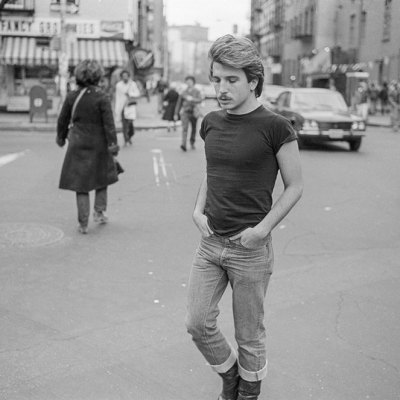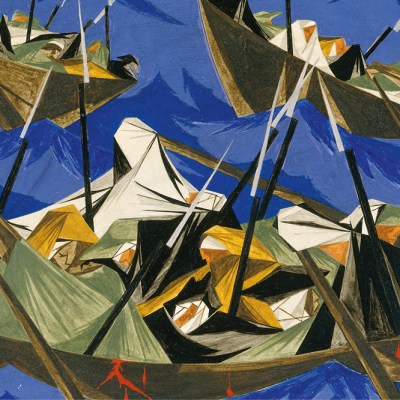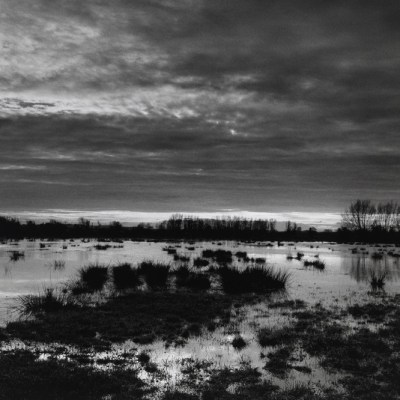 ‘You’ve tucked the kids into bed… slipped into something simple… taken your Valium… and you’re waiting for him to come home… mustn’t be late for the evening shift at the bread factory,’ states a poster featuring a prone model languishing on a plush sofa. The image was part of ‘Who’s Holding the Baby?’, a show by the Hackney Flashers collective, one of many such social interventions discussed by Noni Stacey in her much-needed book Photography of Protest and Community: The Radical Collectives of the 1970s. Not only did these groups try to change the social conditions they documented in Britain, they also challenged how these conditions were recorded by documentary photographers, by figures such as Don McCullin – if they were depicted at all. Stacey gives a compelling sense of the historical context in which these groups operated, although she is less successful in investigating why community photography, as it came to be called, so rarely attained its ultimate goal of having its subjects photograph themselves.
‘You’ve tucked the kids into bed… slipped into something simple… taken your Valium… and you’re waiting for him to come home… mustn’t be late for the evening shift at the bread factory,’ states a poster featuring a prone model languishing on a plush sofa. The image was part of ‘Who’s Holding the Baby?’, a show by the Hackney Flashers collective, one of many such social interventions discussed by Noni Stacey in her much-needed book Photography of Protest and Community: The Radical Collectives of the 1970s. Not only did these groups try to change the social conditions they documented in Britain, they also challenged how these conditions were recorded by documentary photographers, by figures such as Don McCullin – if they were depicted at all. Stacey gives a compelling sense of the historical context in which these groups operated, although she is less successful in investigating why community photography, as it came to be called, so rarely attained its ultimate goal of having its subjects photograph themselves.
Stacey dedicates a chapter to each collective: the Half Moon Photography Workshop (HMPW), Exit, the Blackfriars Photography Project, and Hackney Flashers. HPMW, a merger of the Half Moon Gallery in Whitechapel and the Photography Workshop, envisioned taking documentary photography into public spaces such as schools and hospitals and town halls, and operating in such a way that their workplace – the darkroom – was also accessible to the communities in which they lived. It was in HMPW’s magazine Camerawork that the idea of ‘community photography’ was first developed. In successive issues, HMPW members Tom Picton and Robert Golden respectively imagined it as a ‘genuine people’s photography’ and its apotheosis as ‘a truly proletarian cultural photographic expression which will command the interest and serve the needs of working people’. Located in the East End and Southwark, the Half Moon and Blackfriars groups, for example, could at least counter the established iconography of those areas by involving those who lived there in its production. The collectives were responding to what Stacey identifies as the staged and serialising approach of lone photographers, who swooped in and documented before taking their work back to newspaper editors and commercial galleries, without so much as handing over a print to those photographed. There was also a sense that these figures were blind to the changes around them: Stacey notes that, in 1970, Bill Brandt considered England ‘no longer a country of marked social contrast’ and the places he had so famously photographed, such as Wapping, as ‘more beautiful than before or since’, without noting the deindustrialisation that was turning those deserted areas ‘flat like painted stage scenery’.
Exhibition panel from ‘Problem in the City’, Bristol, June 1975. Photos: Nick Hedges (above right and centre and below centre), Ron McCormick (above left, centre below, centre), Larry Herman (above left)

At the end of the 1960s, conversely, John Berger wrote of the ‘necessity’ of understanding photographs as a ‘weapon which we can use, and which can be used against us’. Berger’s critique of the editorialising of photojournalism – then at its shiny and serious zenith – and the use of photography in advertisements rang true for the collectives, although they could see the connections between international civil rights protests and social conflicts playing out on a smaller scale in London. The political intent of the radical collectives, however, was almost inimical to documentary photography as a commercial art form. Collectives aimed to give individuals the prints of the photographs they appeared in, collected their names so they could be identified, if they wanted to be, and often asked them to add text to explain the circumstances of the image. To that end, exhibitions – addressing issues such as inadequate housing, the non-existent representation of working women, the public perception of strikers – placed as much emphasis on these contributions as they did the photographs. Most importantly, this work would be circulated within the communities pictured, making it accessible to its subjects.
Ron McCormick’s photographs of East End life were powered by the poetry of schoolchildren in the controversial book Stepney Words. Exit’s Problem in the City paired images of deserted tower blocks, taken across the country, with transcribed interviews with residents. Hackney Flashers looked back to the satirical photomontages of John Heartfield with their playful posters using advertising and other appropriated imagery. Materials from the Kilburn Housing Action Area Tenants’ Campaign, exhibited by North Paddington Community Darkroom, show tenants, tightly framed and relaxed, the poor conditions of their individual flats isolated in separate photographs with explanatory text, avoiding the evocation of classic images of poverty and housing.
Other less polemical projects featured in the book still resonate: McCormick’s depictions of festivals in the East End are joyous; Family Self-Portrait by Richard and Sally Greenhill possesses a Nan Goldin-like intimacy; Paul Trevor’s photos of anti-racist protests in Brick Lane depict the Bangladeshi men taking part as activists, rather than victims; Larry Herman’s pictures of colliery workers in Lanarkshire have a surreal wit. There is, undeniably, a functionality about the photographs – artful ambiguity was untrustworthy – but also a decided emphasis on moments of rest and escape, in contrast to McCullin’s vision of ‘the miseries of social war’ that characterised his pictures of the East End in the 1970s.
Stacey’s focus, however, is on the creation of the campaigns, funding battles and often-fraught negotiations with bigger arts organisations and media. The effect of the photography on its subjects is under-investigated, their voices absent from the discussion. This makes for a peculiarly one-sided account, given the subject matter. In general, the telling lacks dynamism, the origins of the book as a PhD evident in its claggy prose which is overly reliant on endnotes. The characters of the radical photographers involved never cut through, their personalities subsumed in the descriptions of their projects.
Workers assembling on an engine line, Luton, in the book Carworker, written by Sarah Cox. Photo: Robert Golden

The attention to process, however, can at times be compelling, as Stacey efficiently shows us all the conflicting interests in mounting a single exhibition. This is particularly the case with the material on the Hackney Flashers, where she outlines all the tensions arising from the collective’s different class backgrounds, the exhibiting of the work in institutions such as the Hayward Gallery, the dependency on a male-dominated trade union for funding, and sometimes with the working-class women depicted in its campaigns. Stacey’s history has a particular resonance now, when so many small arts organisations are struggling to survive. There is a submerged history here of radical community centres, such as Dalston’s Centerprise, and the role of funding bodies in making such art viable.
There is clearly more to be written about community photography and how it unfurled elsewhere. In 1975, Wendy Ewald, a co-founder of HMPW, went to Appalachia and gave children cameras to document their own lives. The resulting series, Portraits and Dreams, which is reissued this year, is both elegiac and hopeful, unlike any other imagery of American rural life in that period and informed, in its own way, by the highest ideals of community photography. Stacey’s book is an excellent primer on the form’s beginnings, if not its reverberations, and the uncompromising ambition required to make it happen.
‘Photography of Protest and Community: The Radical Collectives of the 1970s’ by Noni Stacey is published by Lund Humphries.




